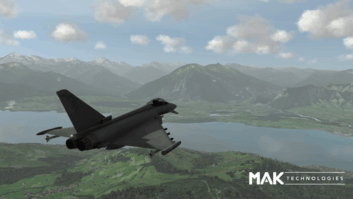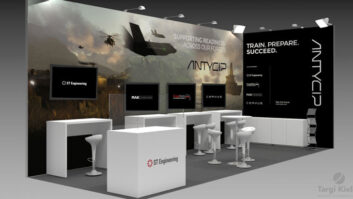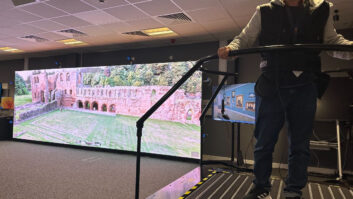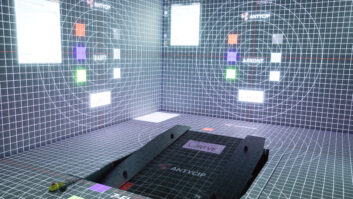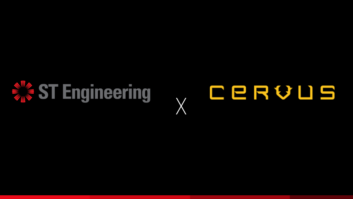ST Engineering Antycip, provider of virtual reality solutions, has delivered a VR CAVE (Cave Automatic Virtual Environment) for its long-standing partner, Oxford Brookes University.
The brief from the university was to enhance its advanced, industry standard research and teaching facilities in engineering and computing using virtual technology. Thanks to a long-term relationship between the university and ST Engineering Antycip, Joe Tah, vice-chancellor and dean of faculty of technology, design and environment at Oxford Brookes University, went on to pursue a collaborative project that offered an educational and immersive VR CAVE setting to its students.
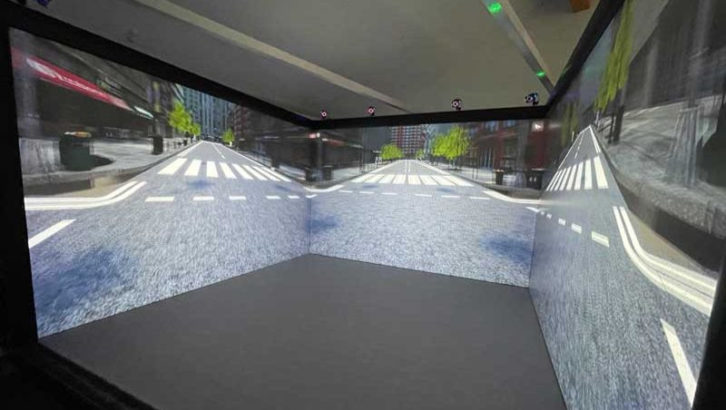 This virtual environment comprises two modes of operation: ‘Unique mode‘, whereby only the primary user’s vision is tracked and dynamically corrected to their eyes, and ‘Multiview mode’, which allows two people to be tracked and each see a different perspective-corrected image when wearing the corresponding 3D glasses.
This virtual environment comprises two modes of operation: ‘Unique mode‘, whereby only the primary user’s vision is tracked and dynamically corrected to their eyes, and ‘Multiview mode’, which allows two people to be tracked and each see a different perspective-corrected image when wearing the corresponding 3D glasses.
“We believe this is the UK’s first Multiview stereoscopic VR CAVE system in operation today,” said John Mould, commercial development manager at ST Engineering Antycip. “One of our biggest challenges for the CAVE was to install the highest quality rear projection screen substrates, which we sourced from Barco – its vertically mounted UDM laser projectors each equipped with unique folded lens optics makes this CAVE’s footprint very compact to further aid its ability to be installed within a restrictive space.”
Combined with an array of high powered PC-Image generators each featuring an NVIDIA Quadro RTX A6000 graphics card, the CAVE is capable of delivering high resolution visuals at 2560×1600 pixels per face, offering 3840×2400 pixels at 120Hz.
Vicon tracking cameras and two wireless navigation devices support the simultaneous tracked dual perspectives, making this CAVE a step up from the restrictions of the past where only one person could be afforded their corrected view.
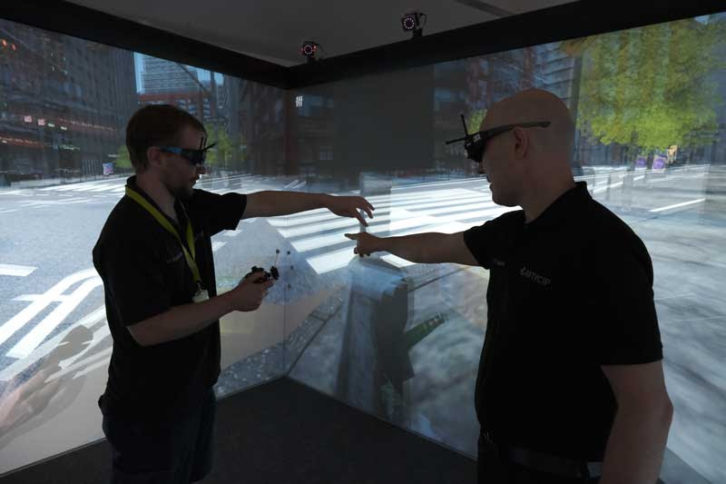 The users of this technology can visually intercept their solid or fluid dynamic models courtesy of Techviz, which is also capable of delivering any Unity-based visual datasets that the university may wish to explore.
The users of this technology can visually intercept their solid or fluid dynamic models courtesy of Techviz, which is also capable of delivering any Unity-based visual datasets that the university may wish to explore.
The software foundation enables the research from the university into vertical wind turbines deployed as sea farms to be reviewed by combining more than one visual application displayed simultaneously using the Techviz Fusion module, which can enable CFD data overlaid with relevant CAD data, for example.
“We are seeing this technology move forward every year – high quality CAVEs of this nature are becoming more desirable and more capable than ever,” continued Mould. “It was an absolute pleasure to work with Oxford Brookes on this exciting project and we look forward to working with them in the future and introducing them to other academic clients, both in Europe and globally, who have already expressed interests to make this connection.”
Oxford Brookes’ head of school engineering, computing and mathematics, Gordana Collier, explained that the interest and scope for this CAVE setting on campus is fast becoming much broader than just engineering, with arts, architecture and health students all showing a vested interest in its capabilities.
 “The CAVE is such a great blank canvas, allowing creativity and flexibility for a very broad range of users, with opportunities for many disciplines, unlike some other more customised platforms,” he said. “The quality is superb and we are delighted to have ways in which we can implement novel learning and improve our research.”
“The CAVE is such a great blank canvas, allowing creativity and flexibility for a very broad range of users, with opportunities for many disciplines, unlike some other more customised platforms,” he said. “The quality is superb and we are delighted to have ways in which we can implement novel learning and improve our research.”
“Our vision is to have an open access approach and share and exchange models and libraries with universities worldwide and are very grateful to ST Engineering Antycip, who can make these connections possible.”
